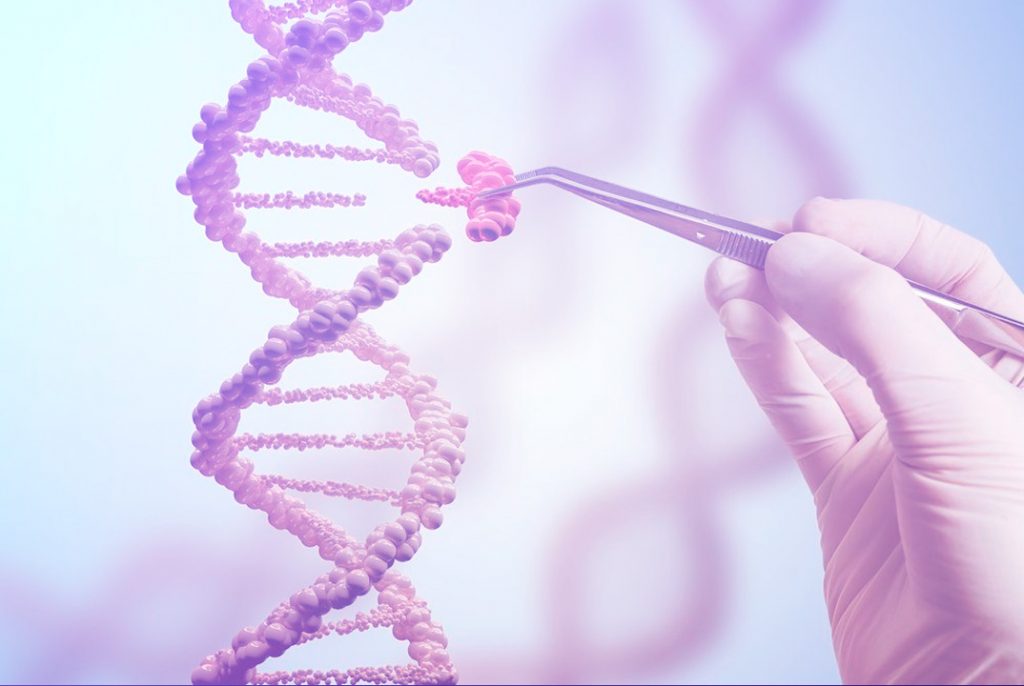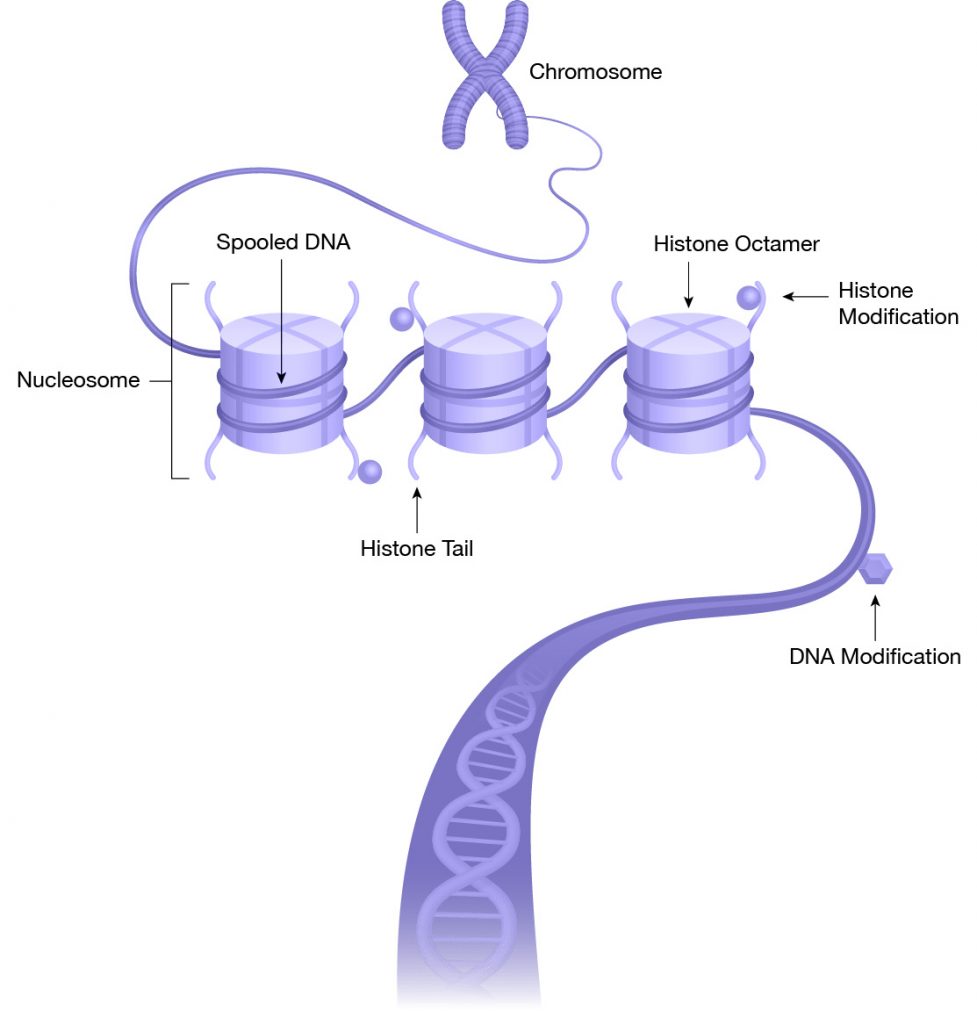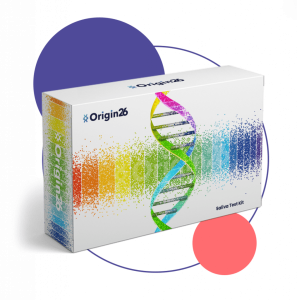What are Chromosomes?
Discover the proteins, the molecules of which we are made
Each Chromosome Has Many Genes
The human genome consists of approximately 21,000 genes, spread over 3 billion base pairs of DNA. This DNA is spread over 23 chromosomes, of which we have two sets. We inherit a set from each parent.
Each chromosome consists of a single linear DNA molecule with its own set of genes. Chromosomes are numbered according to their size, and genes are arranged along them in a specific order. So a gene near the end of the short arm of chromosome 4 in one person will end up in the same place in everyone else. This means that each of our genes can be mapped to a specific place on a specific chromosome.


Genes and more
A gene is a segment of DNA instructions for building a particular RNA or protein molecule. Genes are very important, and they get a lot of attention. Yet they represent only 3% of our genome. Each gene is like an island separated by vast stretches of non-coding DNA, that is, DNA that does not code for a product. Part of this DNA contains information about which cells should make proteins, when they should make them, and how much they should make. Other segments were left behind by viruses that infected our ancestors many generations ago. There is DNA that we know is important – it is conserved between species – but we don’t know exactly why. Some DNA seems to have no function.
DNA in other organisms is also more than just genes, although the amount of non-coding DNA varies greatly from species to species. Bacteria have the smallest genomes and about 90% of their DNA codes for RNA or protein. At the other end of the spectrum, some plants and protists have huge genomes, with genes making up only 1% of total DNA.
Chromosomes Vary in Number and Type
Humans have 23 pairs of chromosomes. The first 22 pairs are called autosomes. The last pair is called sex chromosomes and they are different between males and females. Most women have two X (XX) chromosomes and most men have one X and one Y (XY).
Most other species have a different number of chromosome pairs than ours. Species also vary in the number of sets of chromosomes they have. In some species of bees and ants, males have only one copy of each chromosome (they develop from unfertilized eggs), while females have two. Some plant species have four or more copies of each chromosome. Bacteria have only one chromosome, arranged in a ring.
Species also differ in how chromosomes specify sex. In birds, the sex chromosomes are called Z and W. Females are ZW and males are ZZ. The tiny roundworm C. elegans has only one type of sex chromosome called X. Those with one X chromosome (known as XO) become males, and those with two X chromosomes become hermaphrodites, this which means they make both eggs and sperm. The platypus has ten sex chromosomes. Females have five pairs of X chromosomes and males have five X chromosomes and five Y chromosomes. Some turtles do not use sex chromosomes at all. The sex of a baby turtle depends on how warm it was during a critical period when it was developing inside its egg.
Different organisms have different numbers of chromosomes. Organisms that appear more complex do not always have more chromosomes or genes than less complex organisms.
PERSONALIZED ASSESSMENT
Your Precision Health
Your DNA test includes:
1 DNA sampling kit delivered to your home.
SNP and gene explorer
Laboratory analyzer, follow-up and recommendations
Comprehensive food, nutrition and fitness reports
Personalized nutritional formula
Your secure information


Proteins Control Access to Genes
DNA is coated with proteins called histones. DNA wraps around histones like sewing thread wraps around a spool. By wrapping DNA more or less tightly, histones control which genes are active (being read to build proteins) and which genes are not.
When a cell is about to divide, additional histones attach to the DNA, wrapping it even more tightly.
To learn more about how histones can help regulate DNA access, visit The Epigenome at a Glance.
References
DNA is covered with proteins called histones. DNA wraps around the histones the way sewing thread wraps around a spool. By wrapping DNA more or less tightly, histones control which genes are active (being read to build proteins) and which genes are not.
When a cell gets ready to divide, additional histones attach to DNA, coiling it even tighter.
To learn more about how histones can help regulate access to DNA, visit The Epigenome at a Glance.

